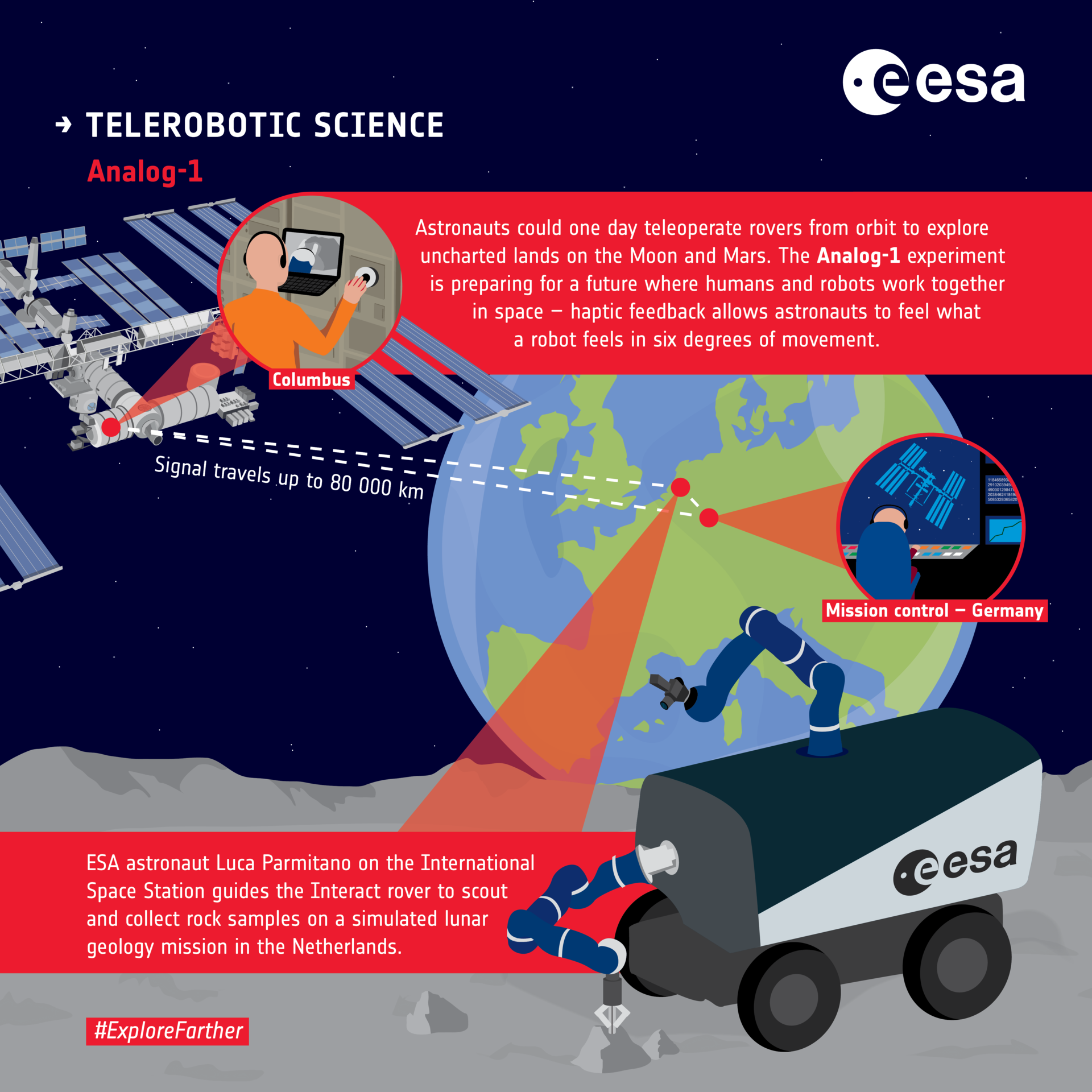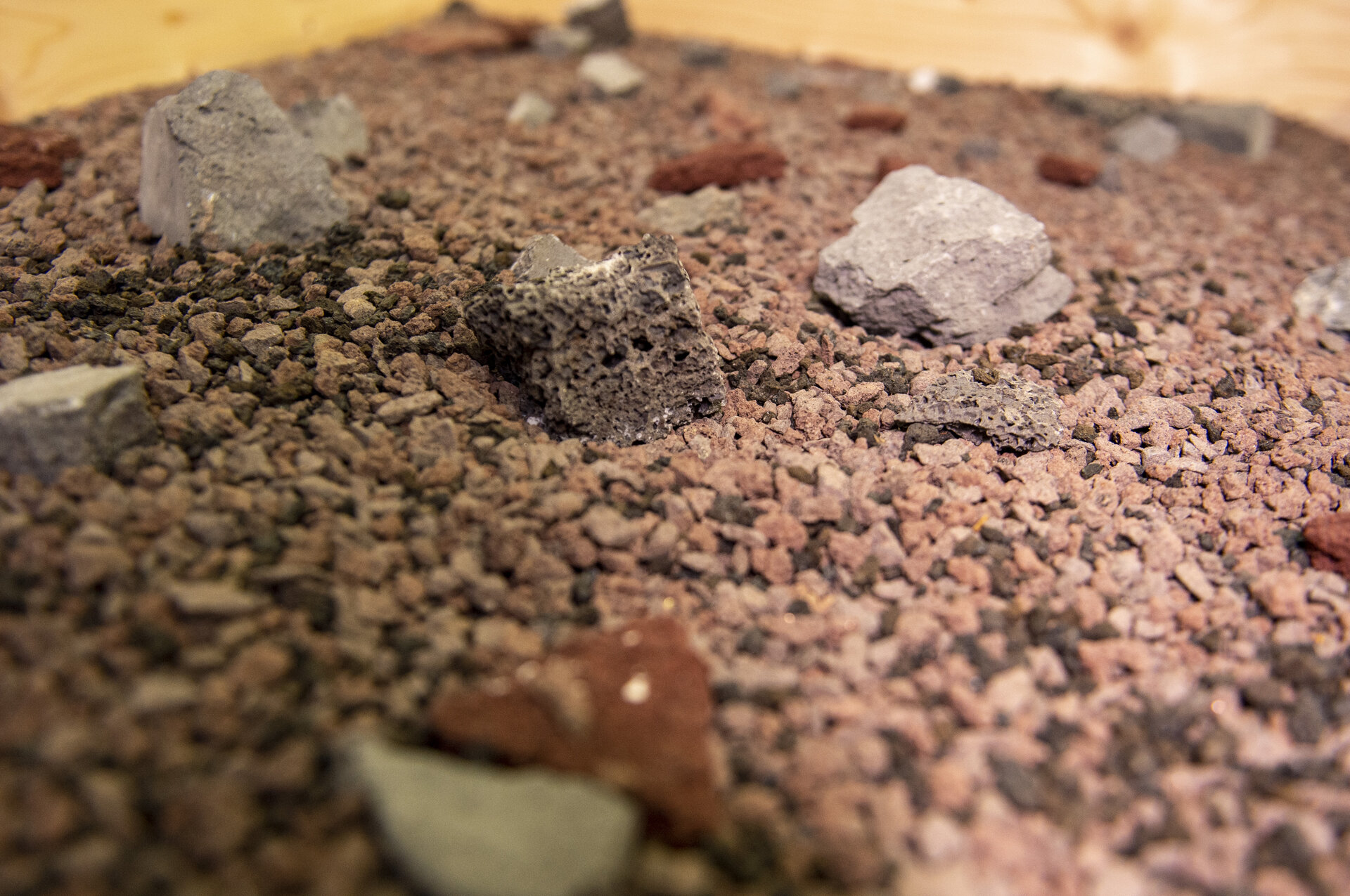23.11.2019

ESA astronaut Luca Parmitano took command of a rover in the Netherlands on Monday and expertly drove it over an obstacle course to collect a rock from a sampling site– all while circling our planet at 28 800 km/h on the International Space Station.

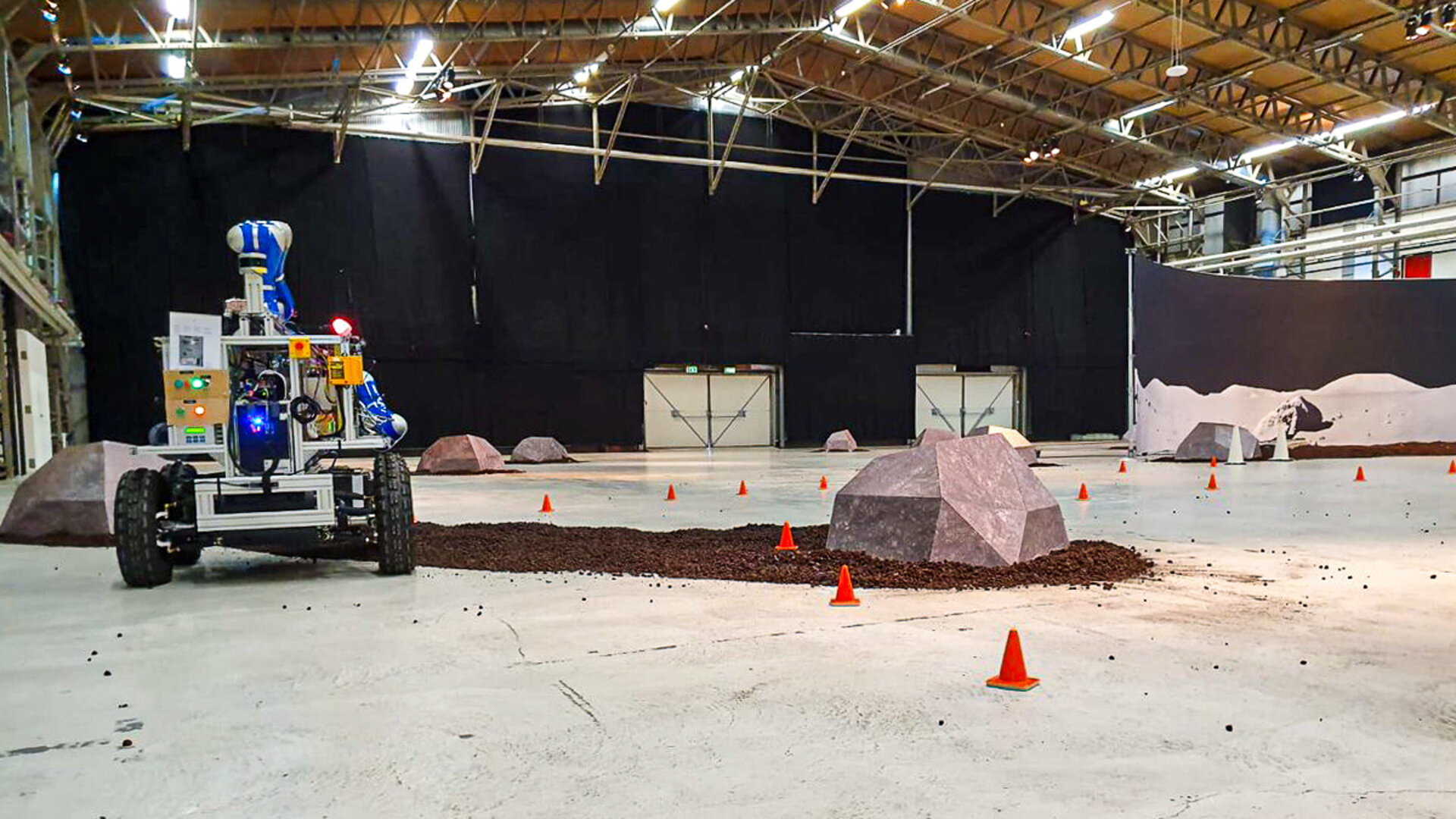
Access the video
This test was the first in a series to prove the technology ESA has developed to operate rovers from afar. Called Analog-1 the test could hardly have gone any better. Given one hour of precious astronaut time, Luca ticked all the boxes for the exam in less than half an hour.
“We are developing systems for astronauts to work hand-in-hand with robots, to achieve much more than they could on their own” says ESA’s project manager Kjetil Wormnes, “a rover on Mars would have taken weeks to do the same work Luca and the Analog-1 rover did in half an hour.”

Robots can be fitted for special tasks and go places where no humans can go, but nothing beats our quick and adaptive thinking and the human touch. The Analog-1 rover is equipped with force feedback so astronauts can feel what the robot feels and adjust grip accordingly on a joystick that allows for six degrees of motion.
ESA’s exploration strategy foresees astronauts controlling robots from orbit around the Moon or Mars or from inside a planetary base.
“Even on the Moon preparing an astronaut for a sortie takes hours just to get into a suit and prepare the airlock,” adds Jessica Grenouilleau, Meteron project lead at ESA’s Exploration Systems Group “by giving astronauts the possibility to control the robots nearby in the safety and comfort of their base or orbital spacecraft, much more can be achieved. This first test indicates an excellent adaptation between the crew and the robotic system, making this combination better at a wide range of tasks.”
Full analogue
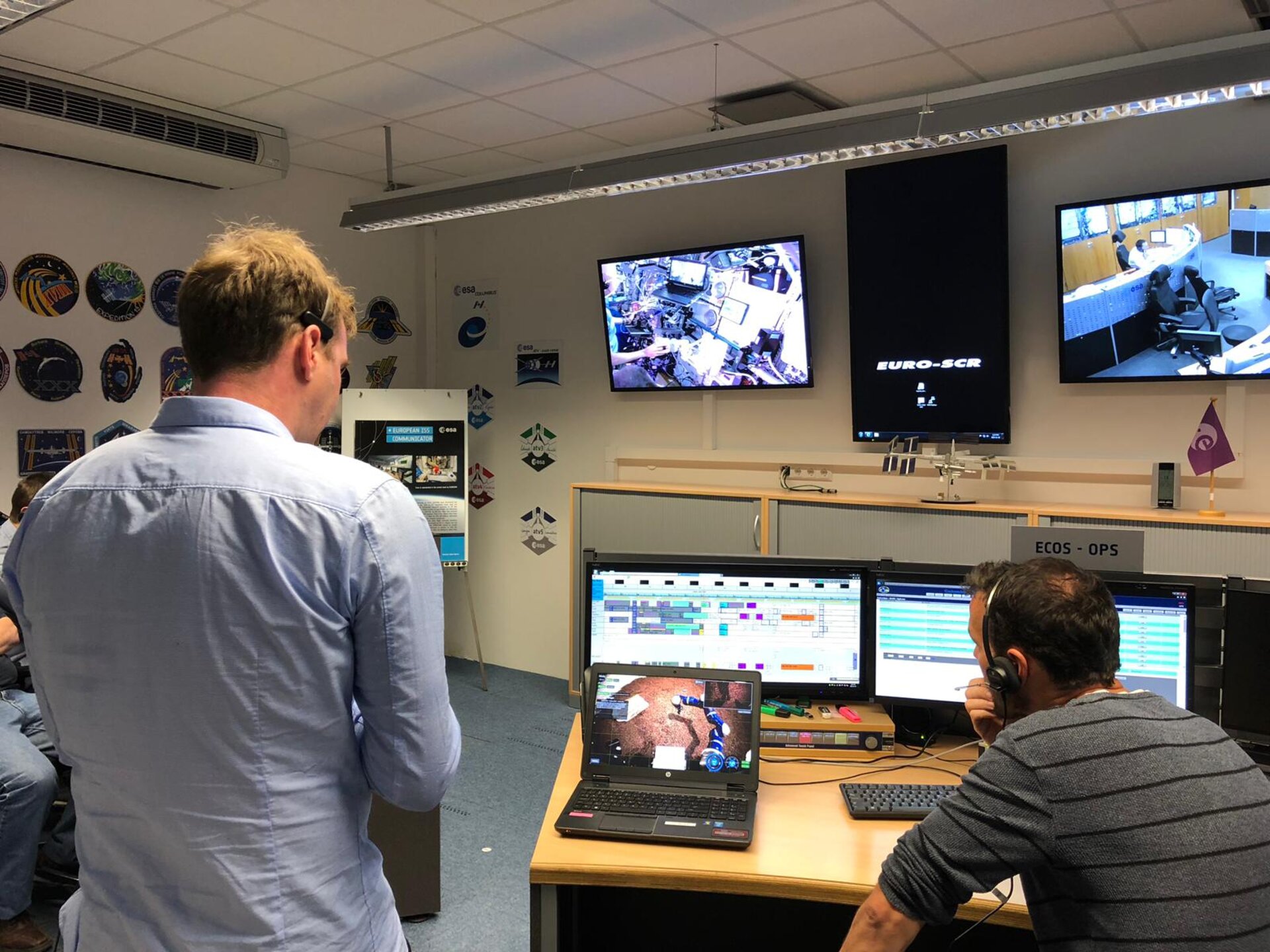
Coming Monday will see all elements of the overarching Meteron project be put to the test. Luca will drive the robot to three sites in the hangar in the Netherlands and decide in collaboration with a science team based at the European Astronaut Centre in Cologne, Germany, which rocks to pick up and keep for later analysis.
This experiment is as authentic as possible using the International Space Station as a stand-in for a lunar gateway and the hangar made to resemble a lunar landscape. Whereas the first “proficiency run” was used to test the systems and Luca had to follow a determined path, next week he will be more free to explore to meet the objectives set up by the science team at the European Astronaut Centre.
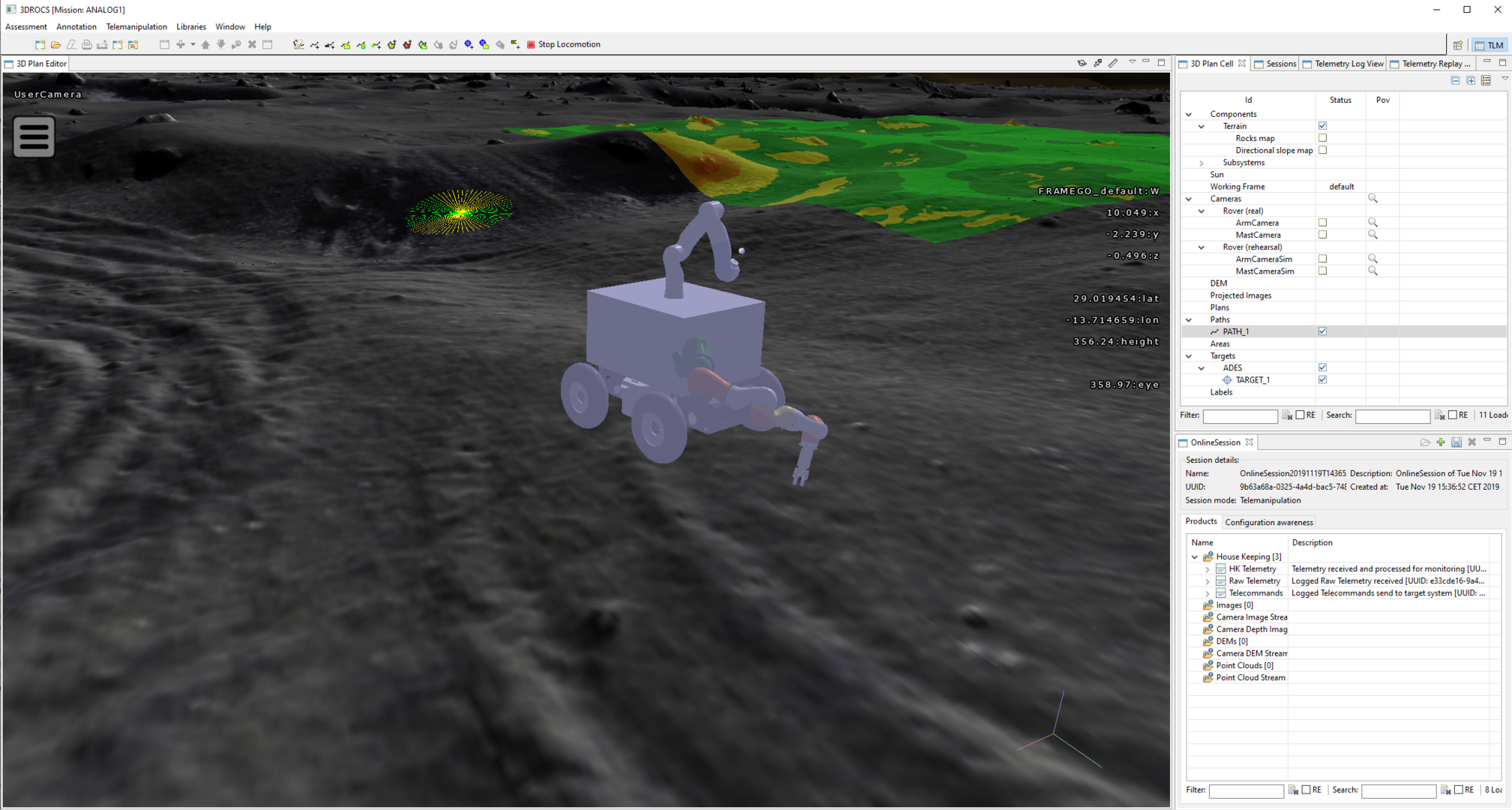
The same science software designed for guiding the ExoMars rover mission on the Red Planet will be used that allows the science team to indicate sites of interest as well as overlay dangerous areas that are beyond the limits of the rover’s capabilities.
The experiment is scheduled to start at around 11:00 CET (10:00 GMT). Follow @esaspaceflight on Twitter for live updates.
The Analog-1 experiment is proving the value of human-robotic cooperation in space and demonstrating the technology that will be used as the basis for many of ESA’s exploration projects. Ministers from ESA’s Member States will convene later this month at the Space19+ in Seville, Spain, to decide on the Agency’s future course.

